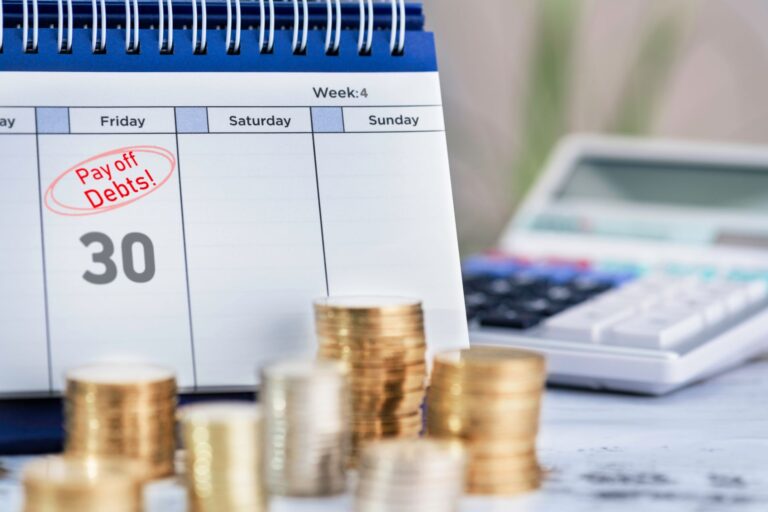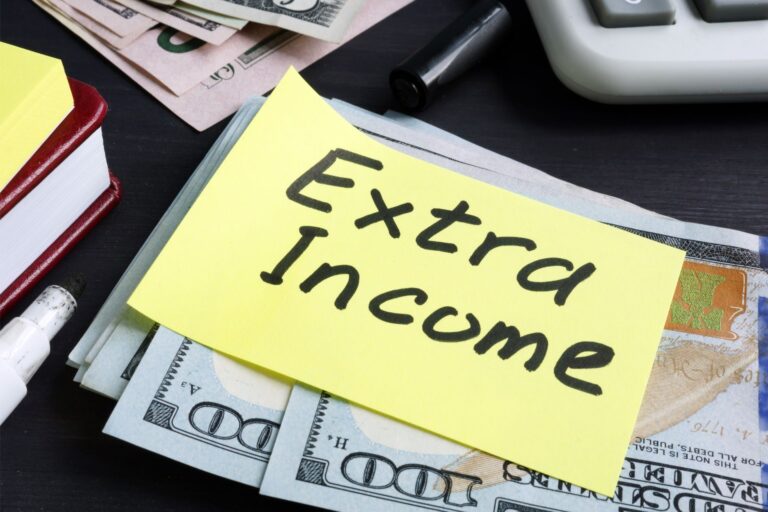14 Essential Financial Goals To Achieve Before 30

Your twenties are a wild ride. One minute you’re celebrating landing your first real job, and the next you’re staring at your bank account wondering how you blew through an entire paycheck in two weeks. Sound familiar?
Here’s the thing: your 20s are the perfect time to get your financial act together. I know, I know. You’d rather think about literally anything else. But trust me on this one. The money moves you make now will either set you up for an amazing future or leave you scrambling when you hit 30.
Picture this: entering your 30s with zero credit card debt, a fat emergency fund, and actually knowing where your money goes each month. Pretty sweet, right? That’s exactly what we’re going to help you achieve.
This isn’t some boring finance lecture filled with complicated jargon. Think of this as your friend giving you the real talk about money that nobody else will.
We’re breaking down 14 essential financial goals that’ll transform your relationship with money before you blow out 30 candles. Ready? Let’s get into it.
Why Your 20s Are Make-or-Break for Your Financial Future
Your twenties aren’t just about figuring out your career and adulting. They’re literally the foundation for everything that comes after. The habits you build now? They stick. The mistakes you make? They compound (and not in the good way).
Think about compound interest for a second. Every dollar you save or invest in your 20s has way more time to grow compared to money you put away in your 30s or 40s. We’re talking potentially tens of thousands of dollars in difference. That’s not pocket change.
Plus, let’s be honest. It’s way easier to live on less and take financial risks when you’re young. No mortgage, maybe no kids, fewer responsibilities. You can hustle harder, save more aggressively, and recover from mistakes faster.
The financial decisions you make before 30 literally shape whether you’ll spend your 30s stressed about money or actually enjoying life. So yeah, this stuff matters. A lot.
14 Essential Financial Goals To Achieve Before 30
Alright, let’s break down the exact financial milestones you need to hit before your 30th birthday. These aren’t just random suggestions. They’re the building blocks of real financial security.
1. Build An Emergency Fund

Life loves throwing curveballs when you least expect them. Your car decides to die. Your laptop crashes right before a big project. You get hit with a surprise medical bill. Fun times, right? :/
An emergency fund is basically your financial safety net. It’s the difference between handling unexpected expenses like a boss and spiraling into credit card debt because you had no other choice.
Here’s what most financial experts recommend: save up three to six months’ worth of living expenses. So if you need $2,000 a month to cover rent, food, bills, and basics, you’re looking at $6,000 to $12,000 in your emergency fund.
How to actually build one without losing your mind:
- Open a separate high-yield savings account just for emergencies (keep it away from your regular checking so you’re not tempted to dip into it)
- Start small if you need to. Even $25 per paycheck adds up faster than you think
- Automate transfers so the money moves before you can spend it
- Treat it like a bill you have to pay. Pay yourself first, always
- When you get unexpected money (tax refund, birthday cash, bonus), throw at least half into this fund
I started with just $500 in my emergency fund. It felt like nothing at first, but having even that small cushion changed how I felt about money. No more panic attacks when something broke.
One trick that worked for me? I named my emergency fund account “Do Not Touch Unless Dying” in my banking app. Sounds dramatic, but it genuinely made me think twice before transferring money out for non-emergencies.
2. Establish A Monthly Budget

Ever looked at your bank account mid-month and thought, “Where the heck did all my money go?” Yeah, we’ve all been there. That’s what happens when you don’t have a budget.
I know budgeting sounds about as fun as watching paint dry, but hear me out. A budget isn’t about restricting yourself or never having fun. It’s about knowing exactly where your money goes so you can spend guilt-free on things that actually matter to you.
The 50/30/20 rule is a solid starting point: 50% of your income goes to needs (rent, groceries, utilities), 30% to wants (eating out, entertainment, that streaming service you barely use), and 20% to savings and debt payoff.
Getting started with budgeting:
- Track every single expense for one month. Use an app like Mint or YNAB to make it easier
- Categorize your spending. You’ll probably be shocked by how much goes to random stuff
- Identify your money leaks (those $5 coffees add up to $150 a month, FYI)
- Set realistic limits for each category based on your actual spending patterns
- Review and adjust monthly because life changes and so should your budget
When I first tracked my spending, I discovered I was dropping nearly $300 a month on takeout. Three hundred dollars! I wasn’t even enjoying most of those meals. Just mindless ordering because I was too lazy to cook.
Creating a budget showed me I could cut that in half, still enjoy occasional restaurant meals, and redirect $150 toward my student loans. That’s real money making a real difference.
3. Achieve Financial Independence From Parents
Look, there’s zero shame in getting help from family while you’re finding your footing. Lots of people do it, and it’s honestly smart to accept support when it’s available.
But here’s the reality: true financial independence means standing on your own two feet. It means making your own decisions without needing to check in with your parents about money. It means actual adulting.
Plus, relying on parental support delays your financial growth. You’re not learning to manage money on your own, budget effectively, or handle financial stress. Those are crucial skills you need to develop.
Steps to cut the financial umbilical cord:
- List every expense your parents currently cover (phone bill, car insurance, rent help, student loan payments, etc.)
- Calculate the total monthly amount
- Create a timeline to take over each expense gradually (don’t try to do everything at once)
- Start with the smallest bill and work your way up
- If needed, increase your income through a side hustle or by negotiating a raise
- Communicate your plan with your parents so they know you’re serious about independence
When I decided to achieve full financial independence, I was 24 and my parents were still paying my phone bill and car insurance. It was only about $150 a month, but it was the principle.
I picked up freelance writing gigs on the side, which brought in an extra $300-400 monthly. That covered taking over those bills plus gave me breathing room. The feeling of paying for everything myself? Honestly priceless.
4. Pay Off High-Interest Debt

Not all debt is created equal. A mortgage or student loans? Those typically have lower interest rates and can actually be considered investments in your future. Credit card debt with 20% interest? That’s financial quicksand.
High-interest debt is literally stealing from your future self. Every month you carry a balance, you’re throwing money away on interest instead of building wealth. It’s the opposite of compound interest working in your favor.
Let me put this in perspective: if you have $5,000 in credit card debt at 20% interest and only make minimum payments, you’ll pay over $7,000 in interest over time. That’s $7,000 that could’ve gone toward investments, travel, or literally anything else.
Your debt destruction game plan:
- List all your debts with their interest rates, balances, and minimum payments
- Use the avalanche method: attack the highest interest rate debt first while making minimum payments on everything else
- Or try the snowball method: pay off the smallest balance first for quick psychological wins
- Call your credit card companies and negotiate lower interest rates (seriously, this works more often than you’d think)
- Consider a balance transfer to a 0% APR card if you qualify
- Cut unnecessary expenses and throw every extra dollar at your debt
- Avoid taking on ANY new debt while you’re in payoff mode
I tackled $8,000 in credit card debt using the avalanche method. It took 14 months of saying no to basically everything fun, but the freedom I felt making that final payment? Worth every sacrifice.
One thing that helped: I calculated how much interest I was paying monthly and visualized what I could buy with that money instead. Suddenly, paying off debt became way more motivating than buying more stuff I didn’t need.
5. Start Saving For Retirement

Retirement probably feels like a million years away right now. I get it. When you’re in your 20s, thinking about being 65 seems ridiculous. But here’s the plot twist: starting early is literally the secret to retiring comfortably.
Thanks to compound interest, money you invest in your 20s grows exponentially more than money invested in your 30s or 40s. We’re talking potentially hundreds of thousands of dollars in difference. Your 25-year-old self can invest way less than your 35-year-old self and still end up with more money.
Let’s do some quick math: If you invest $200 a month starting at age 25 with an average 7% return, you’ll have about $525,000 by age 65. Start at 35 instead? You’ll only have about $244,000. Same monthly contribution, but you’re missing out on $281,000 just by waiting ten years.
Getting started with retirement savings:
- If your employer offers a 401(k) with matching, contribute at least enough to get the full match (it’s literally free money)
- Open a Roth IRA through platforms like Vanguard or Fidelity if you don’t have access to an employer plan
- Start with whatever you can afford, even if it’s just $50 a month
- Increase your contribution by 1% every time you get a raise
- Automate contributions so you never see the money and aren’t tempted to skip months
- Invest in low-cost index funds rather than trying to pick individual stocks
I didn’t start saving for retirement until I was 26, and I still kick myself for those lost years. Even just $100 a month from age 22 would’ve made a massive difference by the time I retire.
The biggest mental shift for me was realizing retirement savings isn’t something you do “when you have extra money.” You make it a priority from the start, just like rent or groceries. Future you will be incredibly grateful.
6. Improve Your Credit Score

Your credit score is basically your financial reputation score. It determines whether you can rent an apartment, get approved for loans, qualify for credit cards, and even affects your car insurance rates in some states.
A high credit score (740+) means lower interest rates on everything from mortgages to car loans. We’re talking potentially tens of thousands of dollars in savings over your lifetime. A low score? You’ll pay more for basically everything, if you even get approved at all.
The crazy part is that improving your credit score isn’t actually that complicated. It just requires consistency and a few smart habits.
How to boost your credit score:
- Pay every single bill on time, every time (set up autopay for everything if you’re forgetful)
- Keep your credit utilization below 30% (if your credit limit is $10,000, keep your balance under $3,000)
- Don’t close old credit cards even if you’re not using them (length of credit history matters)
- Limit new credit applications (each hard inquiry can temporarily ding your score)
- Check your credit report annually for errors at AnnualCreditReport.com
- If you have collections or late payments, negotiate pay-for-delete agreements
- Consider becoming an authorized user on a family member’s card with good payment history
My credit score was sitting at 620 when I was 24 because I’d been an idiot about credit cards in college. I thought minimum payments were fine and missed a few payments when money was tight.
It took about 18 months of religious on-time payments, keeping my utilization under 10%, and disputing a couple errors on my report to get my score above 750. Now I qualify for the best interest rates and credit card rewards. The difference is night and day.
7. Create A Plan To Pay Off Student Loans

Student loans are the reality for millions of people. If you’ve got them, you’re definitely not alone. But having a clear, strategic repayment plan makes a huge difference between paying them off efficiently versus dragging them out for decades.
The average student loan borrower takes 20 years to pay off their loans. Twenty years! That’s two decades of monthly payments hanging over your head. But with the right strategy, you can cut that time significantly.
First things first: understand exactly what you’re dealing with. Federal or private loans? What are your interest rates? What repayment plan are you on? You can’t create a strategy without knowing the details.
Your student loan payoff strategy:
- Log into your loan servicer account and document all your loans, interest rates, and balances
- If payments are too high, look into income-driven repayment plans for federal loans
- Consider refinancing private loans or high-interest federal loans through companies like SoFi or Earnest (but know you’ll lose federal protections)
- Make extra payments toward the principal whenever possible
- Use windfalls (tax refunds, bonuses, birthday money) to make lump sum payments
- Set up biweekly payments instead of monthly to make an extra payment each year
- Look into employer student loan repayment assistance programs
I graduated with $32,000 in student loans at a 6.8% interest rate. My minimum payment was $368 a month, which would’ve taken me 10 years to pay off with over $12,000 in interest.
Instead, I refinanced to 4.5%, picked up side hustles, and threw every extra dollar at the principal. I paid them off in just under 4 years and saved thousands in interest. The month I made that final payment, I literally cried. The weight that lifted was unreal.
8. Save For A Home Down Payment

Homeownership isn’t for everyone, and that’s totally okay. But if buying a home is part of your future plans, starting to save for a down payment in your 20s gives you a massive head start.
Most conventional loans require at least 3-5% down, though 20% is ideal to avoid private mortgage insurance (PMI). That might sound like an impossible amount, but breaking it into smaller milestones makes it way more achievable.
Let’s say you want to buy a $250,000 home in five years. A 20% down payment is $50,000. That breaks down to saving about $833 per month. Still sounds like a lot, but it’s way more doable when you have a clear target and timeline.
Building your down payment fund:
- Decide on a realistic home price range based on your income and location
- Calculate how much you need for your target down payment percentage
- Open a separate high-yield savings account specifically for your down payment
- Set up automatic monthly transfers
- Look into first-time homebuyer programs that offer down payment assistance
- Consider side hustles specifically earmarked for your home fund
- Avoid lifestyle inflation when you get raises and redirect that money to savings instead
Even if you’re not planning to buy soon, having a down payment fund gives you options. Maybe you’ll use it for a home. Maybe you’ll use it to start a business. Maybe it becomes part of your investment portfolio. The point is building the savings habit and giving yourself flexibility.
I started saving for a down payment at 27 even though I had no immediate plans to buy. Three years later, I had $40,000 saved and way more options than I would’ve had otherwise. Having that money gave me confidence and bargaining power.
9. Invest In Professional Development
Your earning potential is literally your biggest asset in your 20s. Investing in skills, certifications, and professional development can lead to promotions, career changes, or starting your own business. The return on investment can be massive.
Think about it: spending $500 on a certification that helps you land a $10,000 raise is a 2,000% return. You’re not going to find that in the stock market. Your skills and knowledge are investments that pay dividends for decades.
Professional development isn’t just about formal education either. It’s about constantly learning, adapting, and staying competitive in your field. The job market changes fast, and people who keep learning are the ones who thrive.
Ways to invest in yourself:
- Identify in-demand skills in your industry or field you want to enter
- Take online courses through Coursera, Udemy, or LinkedIn Learning
- Pursue relevant certifications that make you more qualified and marketable
- Attend industry conferences and networking events
- Find a mentor who can guide your career growth
- Read books and listen to podcasts related to your field
- Ask your employer about professional development budgets or tuition reimbursement
I spent $800 on a digital marketing certification when I was 28. Within six months, I’d leveraged that certification to negotiate a $15,000 raise. That’s nearly a 2,000% return in half a year. Best money I ever spent.
The key is being strategic about what you learn. Don’t just take random courses. Focus on skills that directly translate to higher earning potential or career advancement in your specific situation.
10. Establish Multiple Income Streams

Relying on a single paycheck is risky. Companies downsize. Industries change. Jobs disappear. Having multiple income streams provides security and speeds up your wealth-building journey significantly.
Multiple income streams don’t mean working 80 hours a week (though you might hustle hard initially). It means diversifying how money comes in so you’re not completely dependent on one source.
Even an extra $300-500 per month from a side income can make a huge difference. That’s $3,600-6,000 per year that can go toward debt payoff, investments, or building your emergency fund faster.
Ideas for additional income streams:
- Freelancing in your area of expertise (writing, design, coding, consulting)
- Starting a side business based on a hobby or skill
- Investing in dividend-paying stocks or index funds
- Renting out a room in your home or parking space
- Creating and selling digital products (courses, templates, ebooks)
- Affiliate marketing or content creation
- Tutoring or teaching online
- Gig economy work (driving, delivery, task-based apps)
I started freelance writing as a side hustle at 25, making maybe $200 a month initially. Within two years, I was pulling in an extra $1,500-2,000 monthly. That side income allowed me to pay off debt faster and build savings without feeling strapped.
The beautiful thing about multiple income streams is the security it provides. When I eventually left my full-time job to work for myself, I already had established income sources. The transition was way less scary because I wasn’t starting from zero.
11. Set Up Automatic Savings
Willpower is overrated. Seriously. If you’re relying on willpower alone to save money, you’re making it way harder than it needs to be. Automation removes the decision-making process entirely.
When you automate your savings, the money moves before you even see it. You can’t spend what you don’t have access to. It’s the “pay yourself first” principle in action, and it’s honestly the easiest way to build wealth.
I’ve found that I adjust to having less money in my checking account way faster than I expect. Within a month of increasing my automatic savings, I don’t even notice the difference. But my savings account? That keeps growing steadily.
How to automate your financial life:
- Set up automatic transfers to your savings account on payday (even $50 makes a difference)
- Automate retirement contributions through your employer or IRA
- Use apps like Qapital or Acorns that automatically save based on rules you set
- Set up automatic bill payments so you never miss due dates
- Create separate savings accounts for different goals and automate transfers to each
- Increase your automatic savings by 1% every time you get a raise
When I first automated my savings, I started with just $75 per paycheck going to a separate account. I barely noticed it was gone, but after a year, I had nearly $2,000 saved without thinking about it once.
The psychological benefit is huge too. You stop seeing saving as this painful thing you have to remember to do. It just happens in the background while you live your life. That’s the kind of financial system that actually works long-term.
12. Plan For Major Life Expenses
Life comes with big-ticket expenses. Weddings, home purchases, having kids, traveling, starting a business, going back to school. These aren’t surprises. You can see them coming and plan accordingly.
The mistake most people make is not planning ahead and then scrambling when these events happen. Suddenly they’re taking on debt or draining their emergency fund for things that were totally predictable.
By identifying your likely major expenses and saving for them separately, you can handle these life events without derailing your overall financial plan. It’s about being proactive instead of reactive.
Planning for big expenses:
- Identify major life events you anticipate in the next 5-10 years
- Estimate realistic costs for each (research actual numbers, not guesses)
- Open separate savings accounts for each major goal
- Calculate monthly savings needed to reach each goal by your target date
- Prioritize goals and adjust timelines if needed
- Review and adjust quarterly as your plans change
- Look for ways to reduce costs without sacrificing what matters most
When I got engaged at 28, I already had $8,000 saved specifically for wedding expenses because I’d been contributing $200 a month for three years. We still had to budget carefully, but not having to go into debt or drain our emergency fund made the whole experience way less stressful.
The same principle applies to everything else. Want to travel internationally? Start a travel fund. Thinking about grad school? Begin saving for tuition. Planning for kids eventually? Baby expenses are no joke, so get ahead of it.
13. Understand Taxes And Optimize Deductions
Taxes are confusing, boring, and unavoidable. But understanding the basics can literally save you thousands of dollars over time. Most people overpay on taxes simply because they don’t know what deductions and credits they qualify for.
I’m not saying you need to become a tax expert, but knowing the fundamentals of how taxes work, what bracket you’re in, and what deductions apply to your situation is crucial financial literacy.
The tax code is actually designed with incentives for certain behaviors like saving for retirement, paying student loans, or running a business. If you’re not taking advantage of these, you’re leaving money on the table.
Basic tax optimization strategies:
- Understand your tax bracket and how marginal tax rates work
- Maximize retirement contributions (401k and IRA contributions reduce taxable income)
- Claim the student loan interest deduction if you qualify
- If you have a side hustle, track all business expenses for deductions
- Contribute to an HSA if you have a high-deductible health plan (triple tax advantage)
- Consider working with a CPA if you have complex tax situations
- Use tax software like TurboTax or H&R Block that asks the right questions
- Keep organized records of potential deductions throughout the year
The first year I had significant freelance income, I almost screwed up my taxes because I didn’t understand quarterly estimated payments or what business expenses I could deduct. I ended up hiring a CPA who saved me over $2,000 in taxes I would’ve overpaid.
That $300 I spent on the CPA paid for itself seven times over, plus I learned what I needed to track going forward. Sometimes paying for expertise is the smartest financial move you can make.
14. Learn Basic Investment Principles
Keeping all your money in a regular savings account means it’s actually losing value over time due to inflation. Investing is how you build real wealth and make your money work for you instead of just sitting there.
I get it. Investing feels intimidating when you’re starting out. The terminology, the risk, the fear of losing money. But here’s the reality: not investing is actually riskier long-term than investing wisely.
You don’t need to become a stock market expert or day trader. In fact, most people shouldn’t try to time the market or pick individual stocks. Simple, low-cost index fund investing beats most active traders over time.
Investment basics to understand before 30:
- Learn the difference between stocks, bonds, mutual funds, ETFs, and index funds
- Understand risk tolerance and time horizon (longer time horizon = can take more risk)
- Start with low-cost index funds that track the overall market
- Grasp the concept of compound interest and how it builds wealth over time
- Know about tax-advantaged accounts (401k, IRA, HSA) and use them first
- Understand dollar-cost averaging (investing consistently regardless of market conditions)
- Learn basic portfolio diversification principles
- Open a brokerage account with Vanguard, Fidelity, or Schwab
I didn’t start investing outside of retirement accounts until I was 27, and I wish I’d started earlier. Even just $100 a month invested in a total market index fund from age 22 would’ve given me significantly more wealth by now.
The key is starting, even if it’s small. Invest $50 a month if that’s all you can afford. The habit and knowledge you build is more important initially than the amount. As your income grows, you can increase your investments accordingly.
One thing that helped me overcome my fear of investing was realizing that over any 20-year period, the stock market has always been positive. Short-term volatility is normal and expected. Long-term growth is the goal.
Common Obstacles And How To Overcome Them
Let’s be real. Knowing what you should do financially and actually doing it are two very different things. You’re going to face obstacles. Everyone does. The difference between people who achieve their financial goals and those who don’t is how they handle these challenges.
Low Income
If you’re working with a tight budget, hitting all these goals simultaneously feels impossible. And honestly? It kind of is. You need to prioritize.
Focus first on building a small emergency fund ($500-1,000), then tackle high-interest debt, then work on the other goals progressively. Even saving $25 per paycheck is progress. The amount matters less than the consistency.
Also, look seriously at increasing your income. Negotiate raises, develop new skills, start a side hustle. There’s a limit to how much you can cut expenses, but your income potential is theoretically unlimited.
Lifestyle Inflation
You get a raise. Suddenly you’re eating out more, upgrading your apartment, buying nicer stuff. Before you know it, you’re making more money but somehow not getting ahead financially.
Combat lifestyle inflation by committing to save at least 50% of any raise or bonus before adjusting your lifestyle. If you get a $200 monthly raise, automatically redirect $100 to savings or investments before you get used to having it.
Lack Of Financial Education
Nobody teaches this stuff in school, so most people enter adulthood financially illiterate. That’s not your fault, but it is your responsibility to fix.
Commit to learning. Read personal finance books, listen to podcasts, follow financial experts on social media, take free online courses. Knowledge is literally power when it comes to money. The more you learn, the better decisions you’ll make.
Comparison And FOMO
Your friends are traveling to Bali, buying new cars, living in fancy apartments. Meanwhile, you’re over here brown-bagging lunch and saying no to expensive outings because you’re focused on financial goals.
Remember: social media shows highlight reels, not reality. Many people living large are actually drowning in debt. Focus on your own journey and goals. The financial security you’re building is worth way more than temporary experiences that derail your progress.
Your Action Plan
Fourteen goals sound overwhelming, right? Here’s the good news: you don’t have to tackle everything simultaneously. That’s a recipe for burnout and giving up entirely.
Instead, prioritize based on your specific situation. If you have high-interest debt, that’s your first focus after a small emergency fund. If you’re debt-free but have zero savings, building that emergency fund is priority one.
A realistic timeline approach:
Year 1: Build a $1,000 starter emergency fund, create a budget, start tracking expenses, and begin paying off high-interest debt aggressively.
Year 2: Continue debt payoff, increase emergency fund to one month of expenses, start contributing to retirement accounts (at least enough for employer match).
Year 3: Finish paying off high-interest debt, build emergency fund to 3-6 months, increase retirement contributions, start learning about investing.
Years 4-7: Achieve financial independence from parents, improve credit score to 740+, establish a side income stream, begin saving for major life expenses.
Years 8-10: Maximize retirement contributions, build multiple income streams, save for a home down payment if desired, invest in professional development, master tax optimization.
This timeline is flexible. Your journey will look different based on your starting point, income, expenses, and priorities. The point is having a roadmap rather than wandering aimlessly.
Review your progress quarterly. Celebrate wins, no matter how small. Paid off a credit card? That’s huge! Saved your first $1,000? Amazing! Built your emergency fund to three months? You’re crushing it!
Financial progress isn’t always linear. You’ll have setbacks. Unexpected expenses will happen. You might make mistakes. That’s all part of the process. What matters is staying committed to your overall goals and getting back on track when you stumble.
Final Thoughts
Look, your 20s are going to fly by faster than you think. One day you’re 22 and figuring out your first real job, and suddenly you’re staring down 30 wondering where the time went.
The financial decisions you make during this decade will literally shape the rest of your life. That’s not meant to stress you out. It’s meant to empower you. You have an incredible opportunity right now to build a foundation that will serve you for decades.
Will it be easy? Nope. There will be times when you want to say screw it and blow your savings on something fun. Times when you’re frustrated by how slowly progress seems to happen. Times when you wonder if it’s even worth it.
But here’s what I know from experience: every single sacrifice you make now pays dividends later. The debt you pay off today means freedom tomorrow. The money you invest now compounds into wealth later. The skills you develop open doors you can’t even imagine yet.
You don’t have to be perfect. You don’t have to hit every single goal on this list. But committing to even half of these financial milestones will put you miles ahead of your peers and set you up for a 30s that’s defined by opportunity rather than stress.
Start today. Not tomorrow. Not next month. Not when you get a raise or pay off that one bill. Today. Pick one goal from this list and take one small action toward it right now.
Open that high-yield savings account. Download a budgeting app. Make an extra debt payment. Sign up for your 401k. Just do something. Because the difference between people who achieve financial success and those who don’t isn’t talent or luck. It’s taking action consistently over time.
Your 30-year-old self is watching. Make them proud. You’ve got this!








